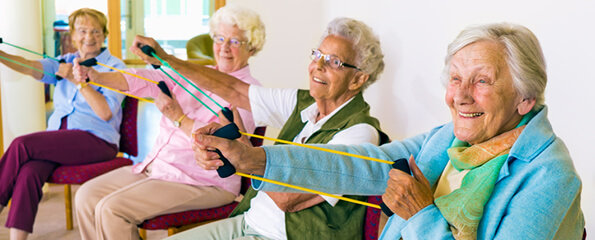Regular stretching shown to improve muscles in elderly
Daily muscle stretching could bring health benefits to elderly people with reduced mobility, according to new research published in The Journal of Physiology.
Despite the well-known beneficial effects of exercise, the proportion of elderly people participating in regular exercise programmes is low, often due to the strenuous nature of exercise training. In particular, elderly people with reduced mobility and weak muscles are often less likely to take part in exercise.
Muscle stretching is widely performed as a warm-up or cool-down and is low intensity compared to aerobic exercise. This means that even very old individuals can perform muscle stretching with minimal risk of injury.
Researchers from Florida State University, Kansas State University and the University of Electro-communications in Tokyo found that regular muscular stretching, when performed five times per week, for four weeks, increases blood flow to muscles of the lower leg. They also found that regular muscular stretching improves the function of arteries in the muscles of the lower legs, and increases the number of capillaries within stretched muscles.
This suggests that for individuals with limited mobility, regular muscular stretching could improve blood flow to muscles. This has particularly important implications for elderly people with lower leg problems for whom walking is difficult due to pain or lack of mobility. Additionally, patients with peripheral artery disease and patients with foot or leg problems related to conditions such as diabetes might be able to use muscular stretching to improve blood flow to their lower limbs and increase or regain walking function.
The team carried out the research by placing splints on the lower limb of aged rats so that the calf muscles were stretched while the splint was in place. Splints were placed on one leg for thirty minutes, five days per week, for four weeks. They compared blood flow, arterial function, and the number of capillaries in the muscles of the stretched lower limb to the unstretched, contralateral limb.
Lead researcher on the study, Dr Judy Muller-Delp, Professor of Biomedical Sciences at the Florida State University College of Medicine, said:
“The benefits of exercise are well known, but elderly people with limited mobility are often less likely to take part. Our research suggests that static muscle stretching performed regularly can have a real impact by increasing blood flow to muscles in the lower leg. This highlights that even individuals who struggle to walk due to pain or lack of mobility can undertake activity to possibly improve their health.
“We did not test a range of stretching or a different timeframe for the stretching intervention. It is possible that greater stretch or stretch that increases steadily over the four week period would have an even greater benefit. It is also possible that greater benefit would be seen if the stretching continued for longer than 4 weeks.”
(Source: The Physiological Society, The Journal of Physiology)
Dates
Tags
Created by:

 Login
Login














